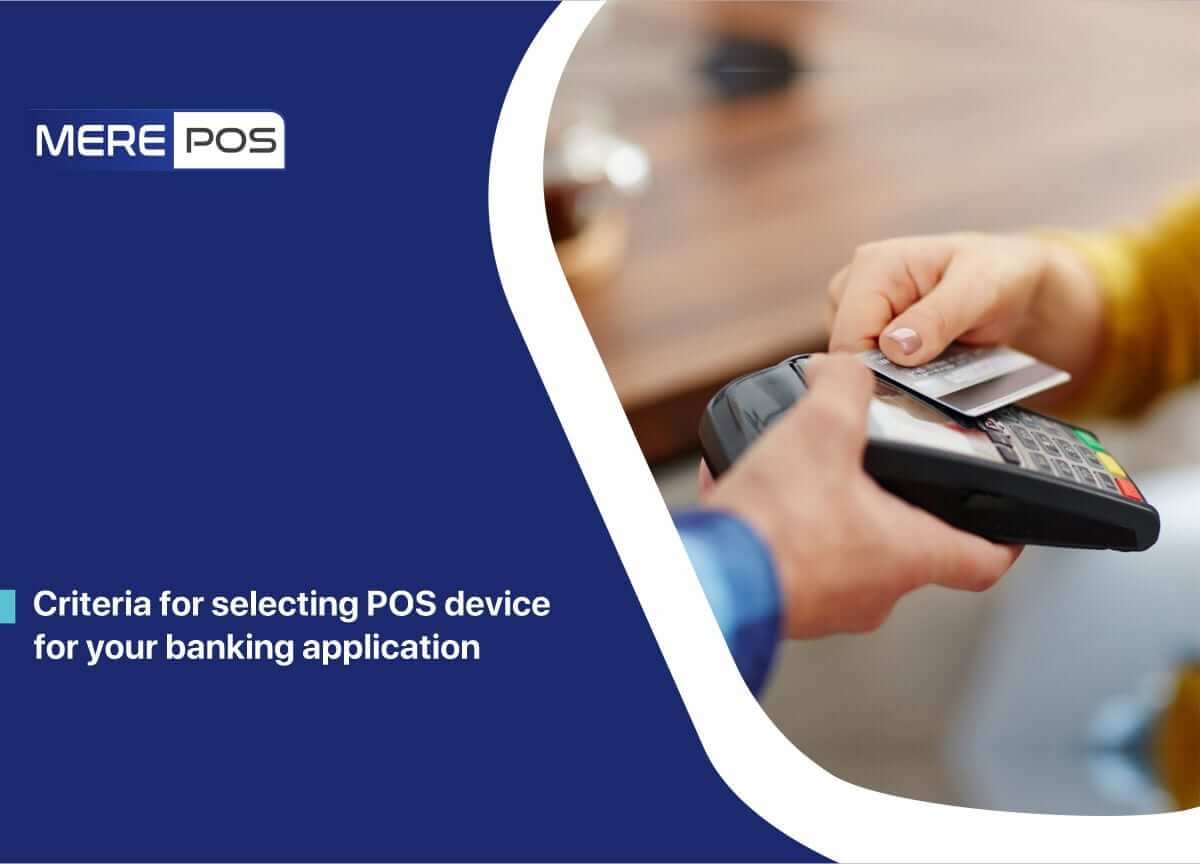POS in Banking: Accelerating Digitization

Digitalization of banking to the core is not just limited to digital payment (a lot of people think so). It means digitalizing every operation and activity undertaken by a banking or financial institution.
In the current economy, the complete digitalization of retail banking is highly reliant on point-of-sale (POS) systems. Digital wallets and payment apps are not suitable for all situations since many customers are still unfamiliar with the concept, and there could be network issues. Suppose the customer's mobile network is out of coverage. They must switch to other options. Here come the POS devices that are more interoperable and can handle all payment options (cards, QR codes, barcodes, NFC, etc.).
The POS device benefits both banks and retailers. Let's take a look at how it became the core of digital banking.
How Do POS devices benefit banking institutions?
POS devices benefit the banks in several ways, by saving costs and being a more practical way to carry out remote transactions.
Cuts the cost and time of transactions
Compared to any digital transaction (ATM and POS), the cost of a branch-level transaction is relatively high. According to RBI's record, 45,10,481 bank-linked POS devices are presently in use in India. Considering the population, this is small. However, almost all prominent banks are now using POS in their account section to receive money and execute transactions. It helps cut down the queues at branches and costs by reducing work time and paperwork and reducing the cost of printing invoices. POS transactions will eventually replace passbooks with mobile applications and SMS.
Businesses won't be requiring additional staff to manage transactions and account handling. It also helps save money on spending on printers, computers, and data storage space.
Improved efficiency with the automated process
POS devices can automate payment processing, daily settlements, reporting, and employee attendance tracking. It streamlines all the processes that lead to achieving a quick ROI.
In banking, POS can automate the process of executing the KYC procedure remotely from anywhere, bringing the country more to financial inclusion.
Accept all payment modes.
Previously, transferring money from one bank account to another was a time-consuming process. With POS devices, this could execute faster with debit/credit cards from any bank for in-bank transactions. On the other hand, businesses and retailers have more options in accepting payments; cards, NFC, UPI, QR codes, barcodes, biometrics, etc.
Monthly instalments with POS
Banks offer EMI facilities to their customers. But for that, they have to approach banks' representatives and need to go through a verification procedure. With POS devices, banks can provide their EMI solutions to any vendor to execute a hassle-free EMI service for customers. EMI solution integrated into retailers' POS devices also ensures accurate identification of customers with biometric authentication. This makes the processing fast and precise.
Connectivity
POS devices offer better connectivity options like Bluetooth, wifi, 3g/4g, and NFC, making payment and data sharing easy. Business POS might need to share transaction reports, transaction history, and other credentials. Various connectivity options ensure that the POS is always online.
Increased flexibility with Andriod systems
Andriod POS system is a relatively new technology. It unlocks the ability of POS to use customized or third-party applications for POS solutions, increasing the flexibility of the device. Android system also eases the usability for retailers and doesn't require any training for users.
High security
POS device allows transactions from anywhere, not just restricted to bank infrastructure. Hence, it requires robust security measures. The POS transactions are executed by the consumer's authentication, either through PIN or the latest biometric authentication facility.
Customizable interface
POS software applications and interfaces are customizable for the need of every business type or bank functionality. There won't be any set-up fee. Although integrating the POS with the sales website may have a cost, the amount depends on the system's complexity.
Final lines:
The modern POS devices are greatly helping all types of businesses by providing smart solutions and saving time. Banks may ensure that most transactions occur within the banking framework by providing POS devices to their various branches. This will strengthen the banking sector, resulting in a robust economy.